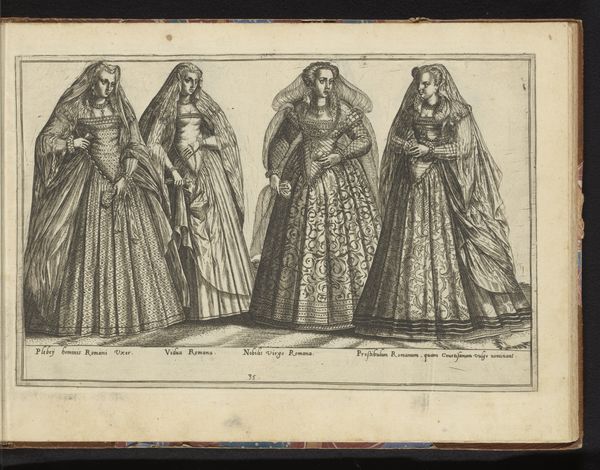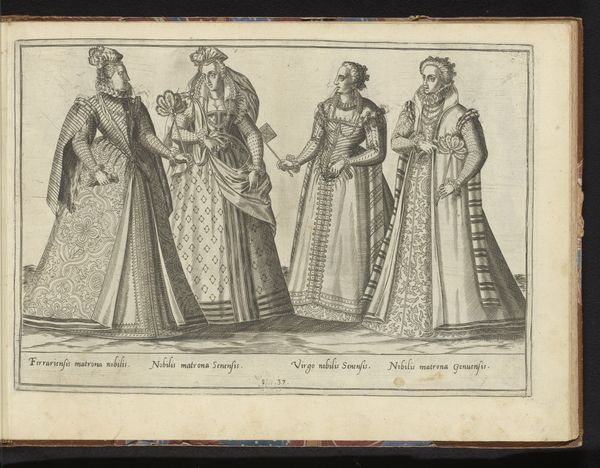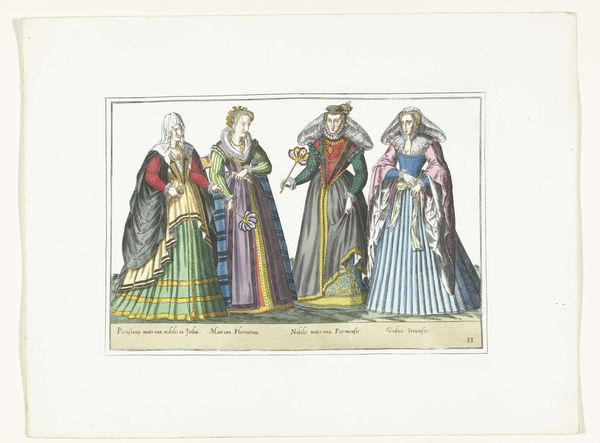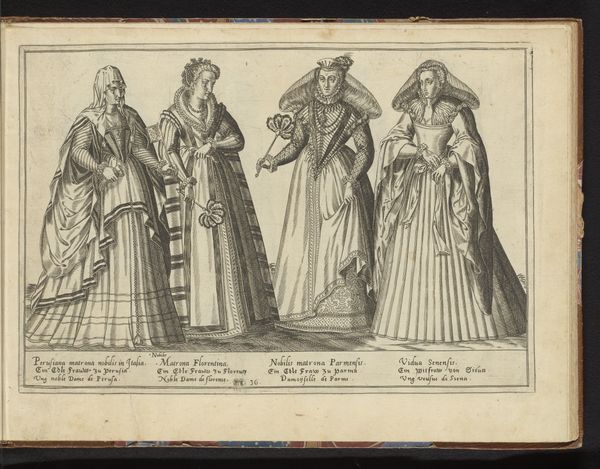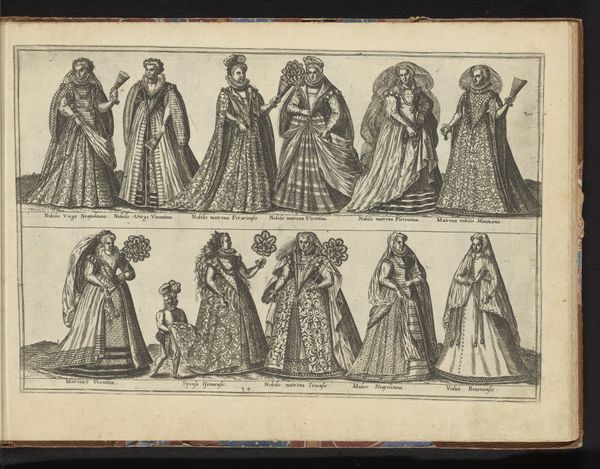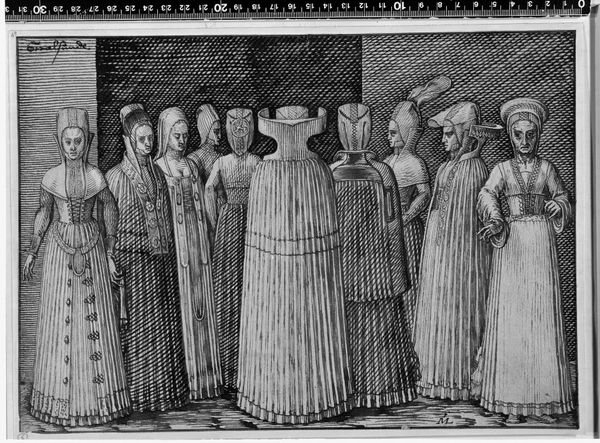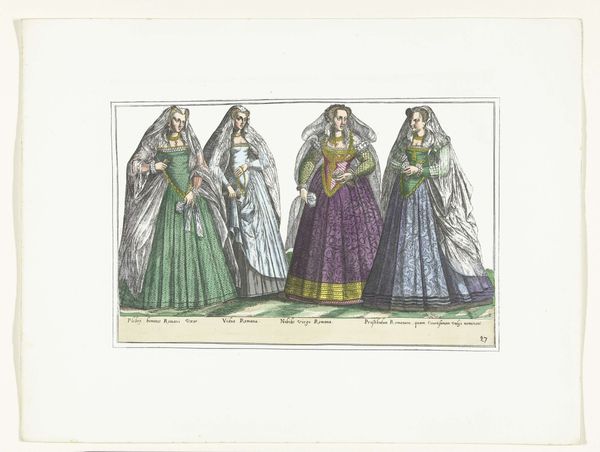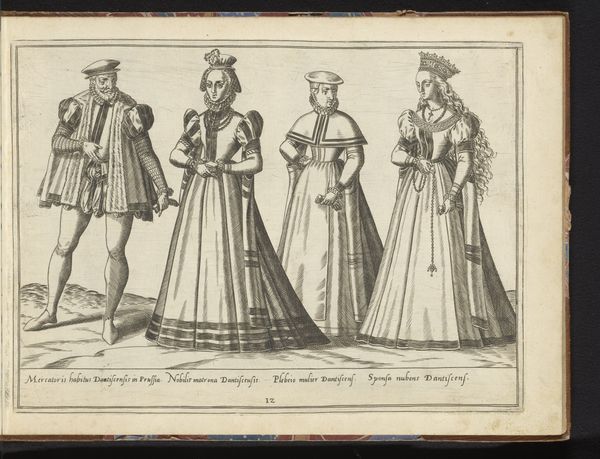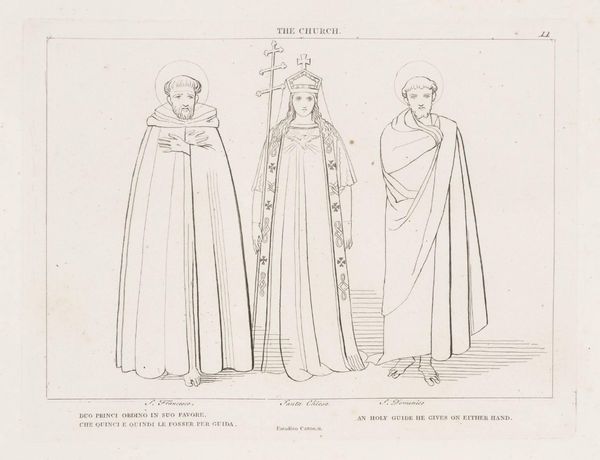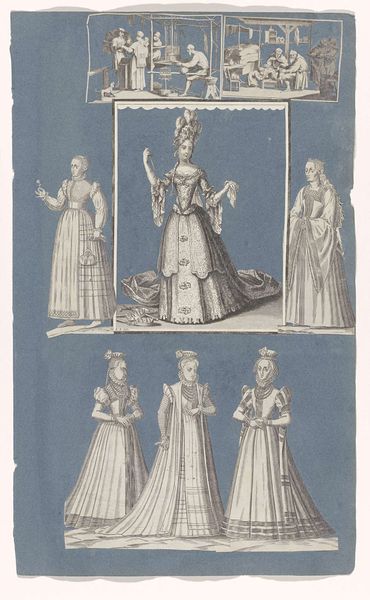
Prostibula vel (ut mollius dicam) amica Veneta; Ducis Veneti Vxor; Nobilis matrona Veneta; Virgo Veneta 1580
0:00
0:00
drawing, print, engraving
#
portrait
#
drawing
# print
#
book
#
figuration
#
11_renaissance
#
italian-renaissance
#
engraving
Dimensions: Image: 8 11/16 × 12 15/16 in. (22 × 32.8 cm) Frame: 10 3/8 × 14 5/8 in. (26.4 × 37.1 cm) Sheet: 21 5/16 × 16 5/16 in. (54.2 × 41.5 cm) Book: 21 7/8 × 16 3/4 × 1 15/16 in. (55.5 × 42.5 × 5 cm)
Copyright: Public Domain
Abraham de Bruyn created this engraving, “Prostibula vel (ut mollius dicam) amica Veneta,” sometime between 1540 and 1587. The composition is structured around four female figures, each meticulously detailed with distinct garments and ornamentation that visually signifies social categories. The stark contrast between light and shadow, achieved through delicate lines, enhances the textures of the fabrics. This meticulous detail reflects a deep understanding of materiality and form. Each figure stands as a sign, a representation laden with cultural meaning, revealing a complex social hierarchy. The artist employs a semiotic system where clothing, adornment, and even posture communicate codified messages about identity and status. These elements combine to question the fluidity of identity in early modern Venice. De Bruyn uses the visual language of clothing and representation to explore the intricate power dynamics within the society. By prompting us to decode its visual elements, the artwork remains a vital site for understanding the ways in which art engages with and reflects the complexities of cultural identity.
Comments
No comments
Be the first to comment and join the conversation on the ultimate creative platform.
